A new study indicates that from 4,000 years ago until as recently as 1,500 years ago, or when CO2 levels ranged between 255 and 270 ppm, lake levels in Antarctica were as high as 60 meters above today’s levels. This coincided with “warmer-than-modern paleoclimate throughout the Holocene.”
During the last 2,000 years, Antarctica’s temperatures have been steadily cooling (Zhang et al., 2021).
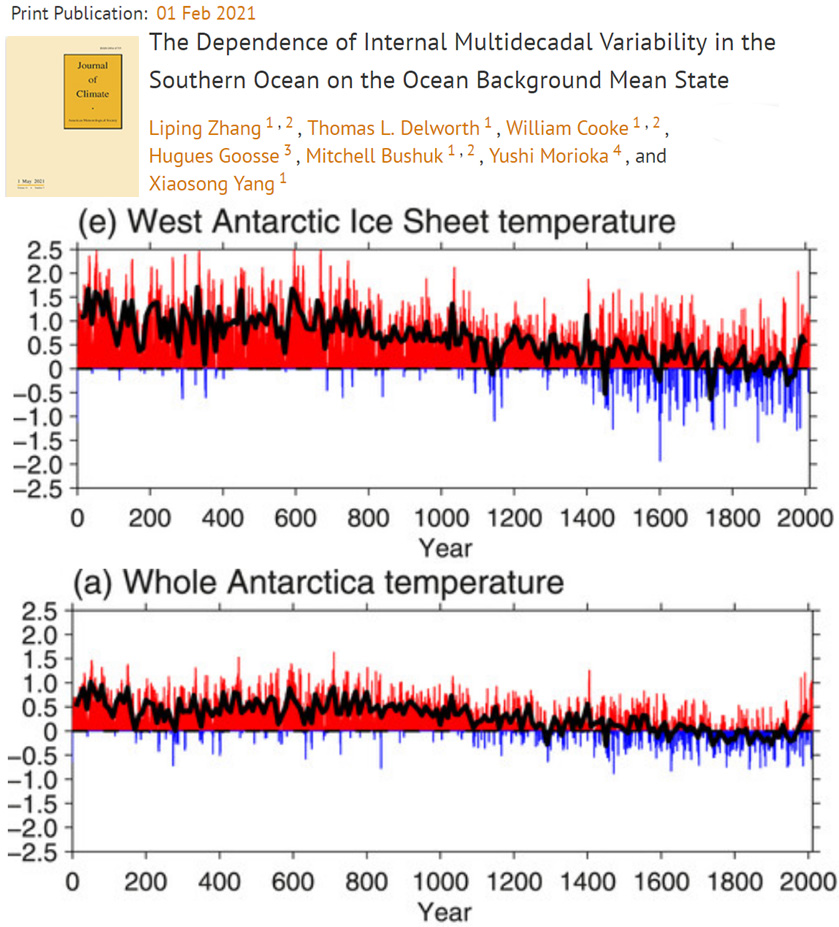
Image Source: Zhang et al., 2021
The cooling has continued during recent decades, with East Antarctica cooling -2.8°C and West Antarctica cooling -1.68°C since 1979 (Zhu et al., 2021). The Antarctic Peninsula has been cooling since 1999 (Sancho et al., 2017, Oliva et al., 2017, Turner et al., 2016).
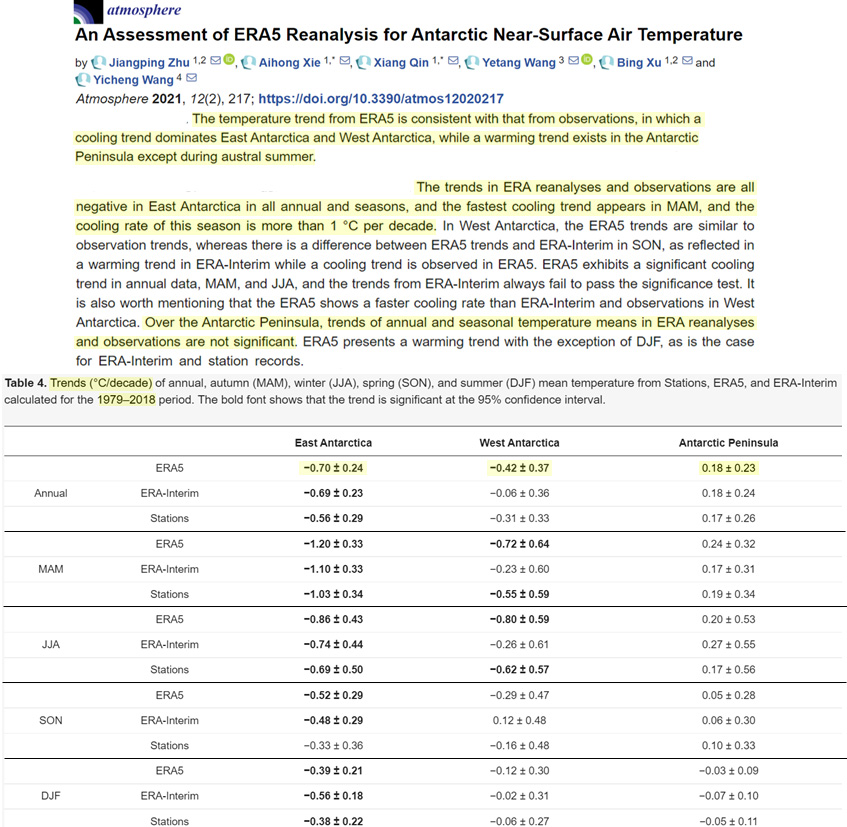
Image Source: Zhu et al., 2021
From 12,000 to 2,000 years before present, Antarctica was up to 5°C warmer than it is today before cooling down to today’s levels. Regional lakes were as much as 60 meters higher than present until as recently as 1,500 years ago.
“The drivers of MDV lake level change represent a complex combination of climate, ice sheet extent, and basin hypsometry. During the Last Glacial Maximum (LGM), roughly 28.5–12.8 ka, Antarctica underwent a period of ice sheet thickening and advance (Hall et al., 2015). Stable isotope records from Taylor Dome (located roughly 100 km west of the MDVs) indicate mean annual air temperatures ca. 4–9 °C lower than modern during the LGM (Steig et al., 2000). Following the LGM (12 000–2000 years BP) regional temperatures were up to 5 °C warmer than modern conditions (Fig. 2) (Steig et al., 2000; Monnin et al., 2004).”
“Resistivity data suggest that active permafrost formation has been ongoing since the onset of lake drainage and that as recently as 1500–4000 years BP, lake levels were over 60 m higher than present. This coincides with a warmer-than-modern paleoclimate throughout the Holocene inferred by the nearby Taylor Dome ice core record. Our results indicate Mid to Late Holocene lake level high stands, which runs counter to previous research finding a colder and drier era with little hydrologic activity throughout the last 5000 years.”
“Taylor Dome ice core records show a highly variable Holocene climate with temperatures up to 5 ∘C above modern until 1–2 ka, when temperatures came down to modern levels (Steig et al., 2000; Monnin et al., 2004).”
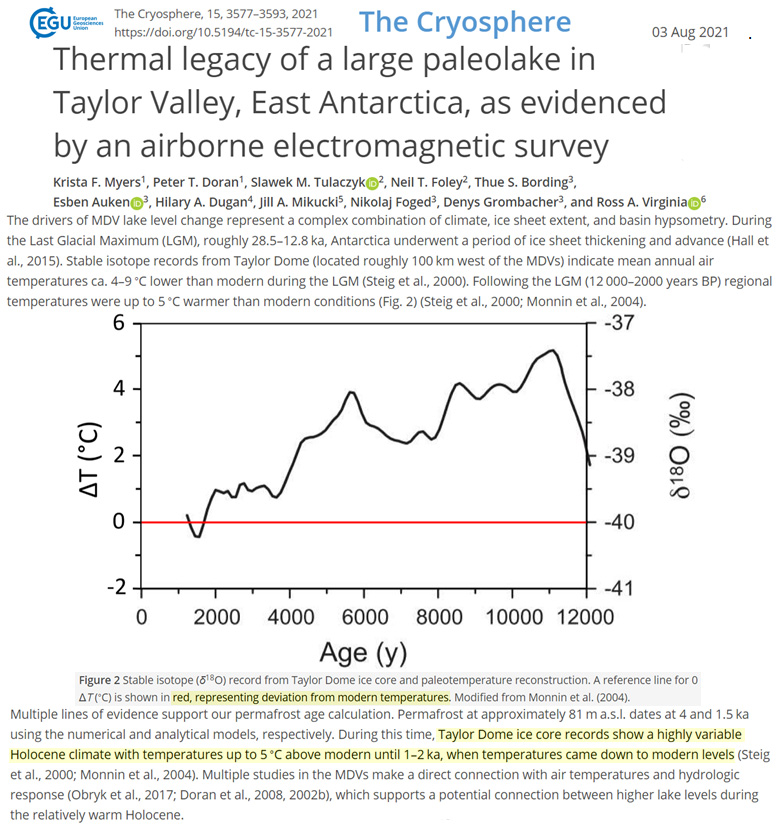
Image Source: Myers et al., 2021
About 1,000 years ago (i.e., the Medieval Warm Period) Antarctica was “substantially warmer than present” and the Southern Ocean waters were ice-free enough that elephant seals could breed in the Ross Sea, or near the coast of south-central Antarctica’s Victoria Land.
Today this region is so much colder and the sea ice so thick that elephant seals must travel 2,400 kilometers north of where they used to breed 1,000 years ago just to find sea ice-free waters (Koch et al., 2019; Hall et al., 2006).
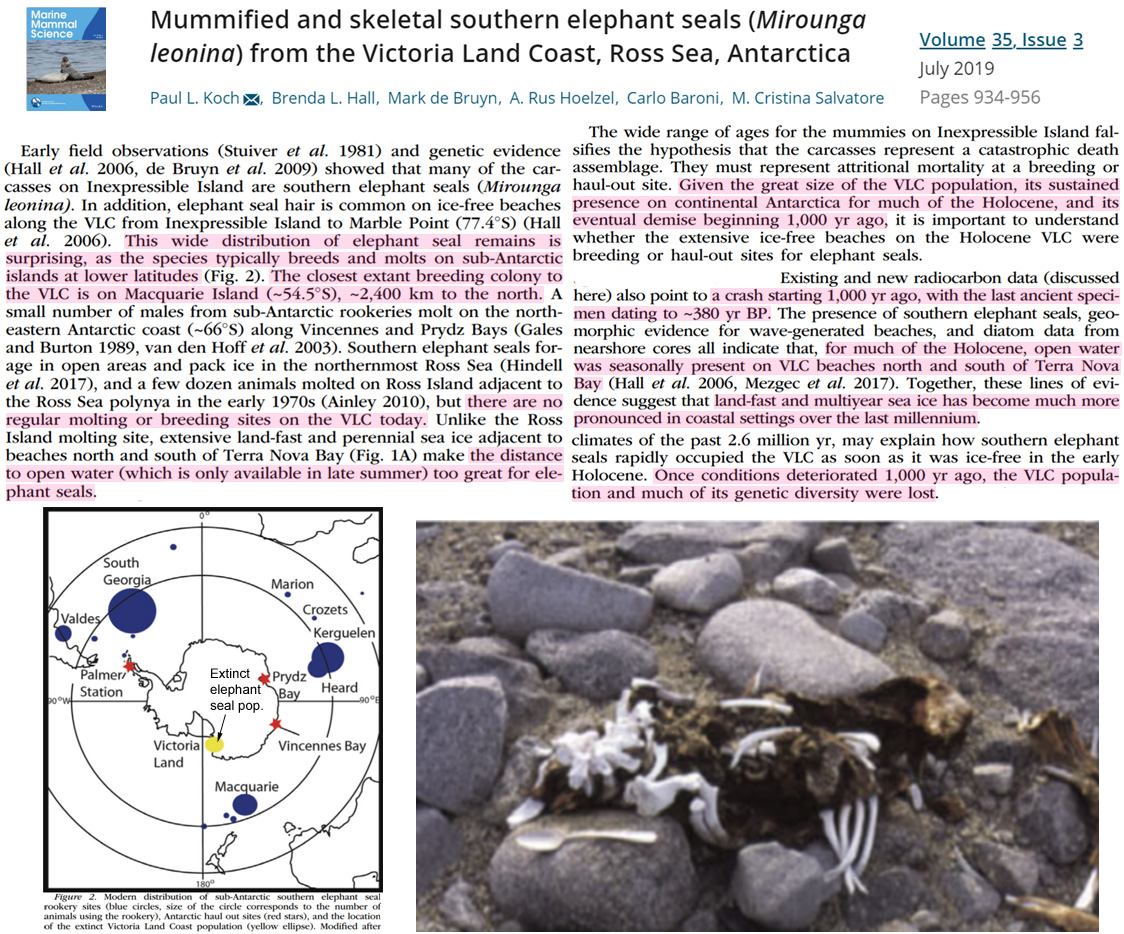
Image Source: Koch et al., 2019
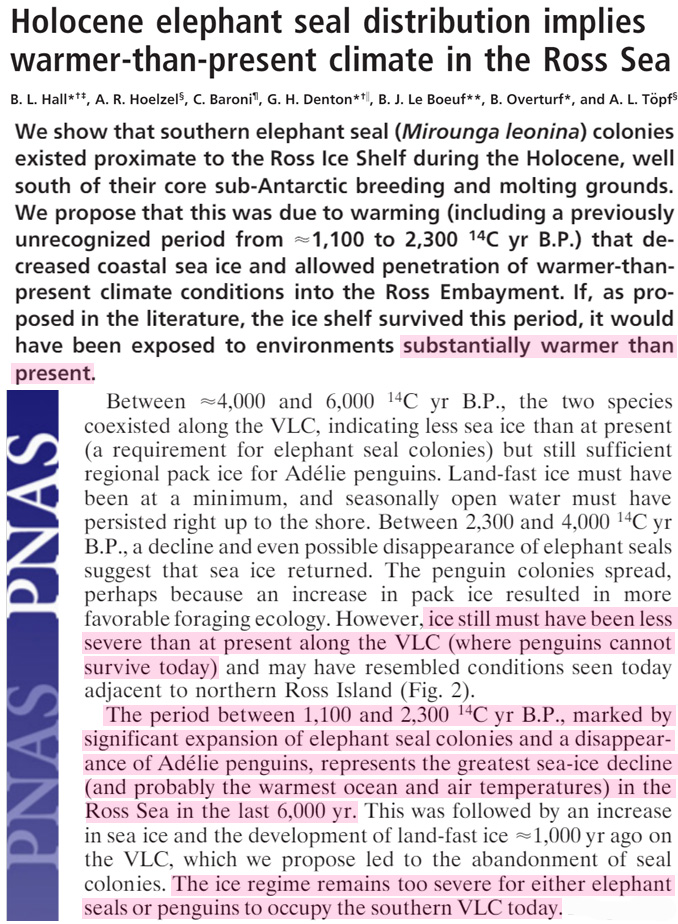
Image Source: Hall et al., 2006
It would appear that none of the Holocene and modern temperature trends in Antarctica are consistent a CO2-driven climate. In fact, an anti-correlation pattern has seemed to emerge: Antarctica cools as CO2 levels rise.





Thanks a lot for sharing!
[…] Antarctic Temperatures Were ‘Up To 5°C Above Modern’ From 12,000–2,000 Years BP […]
[…] A “New” Theory About the Formation of the Antarctic Ice Sheet. Guest post by David Middleton. Antarctic Temperatures Were ‘Up To 5°C Above Modern’ From 12,000–2,000 Years BP. […]